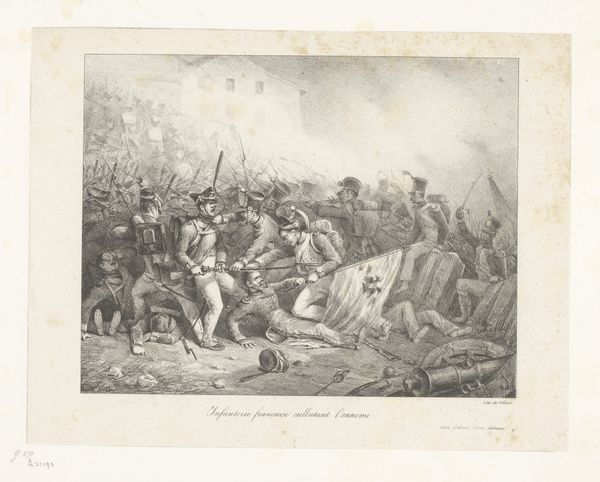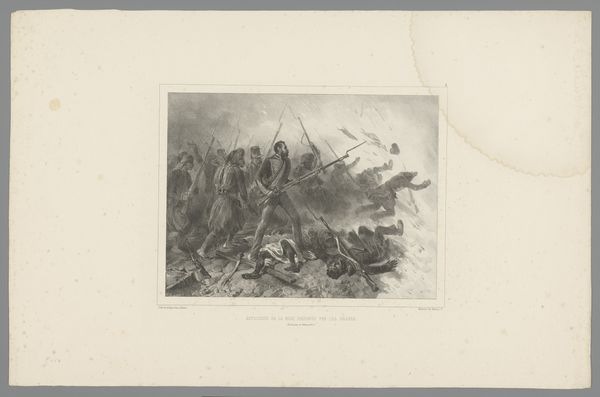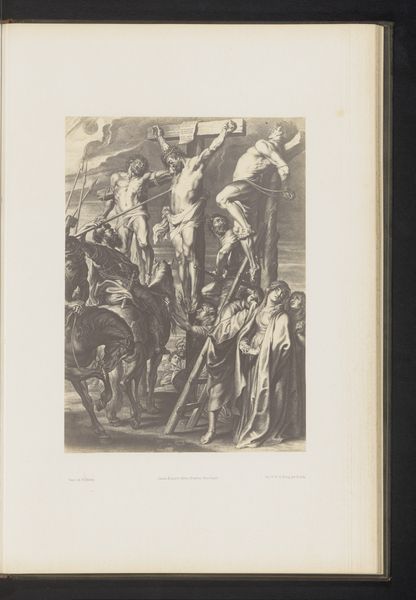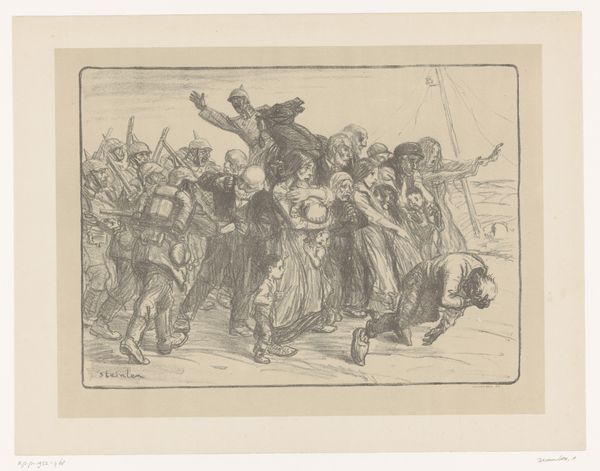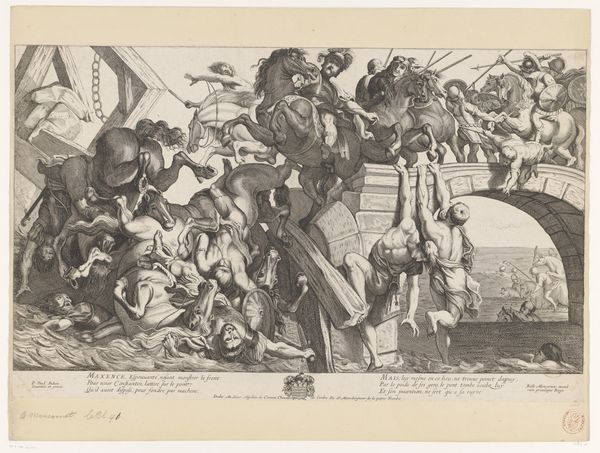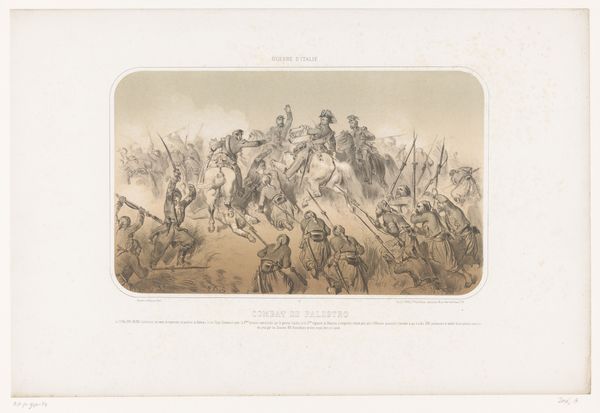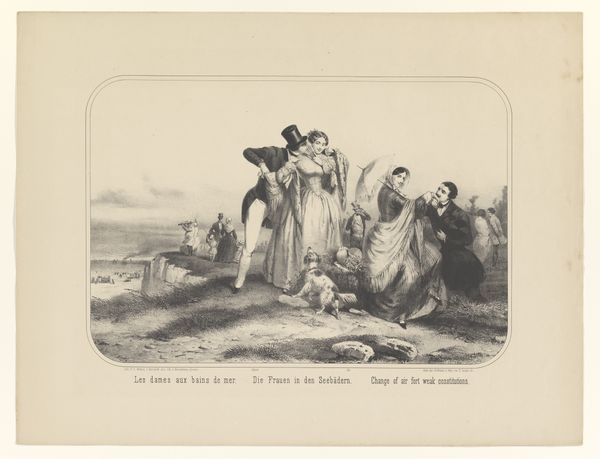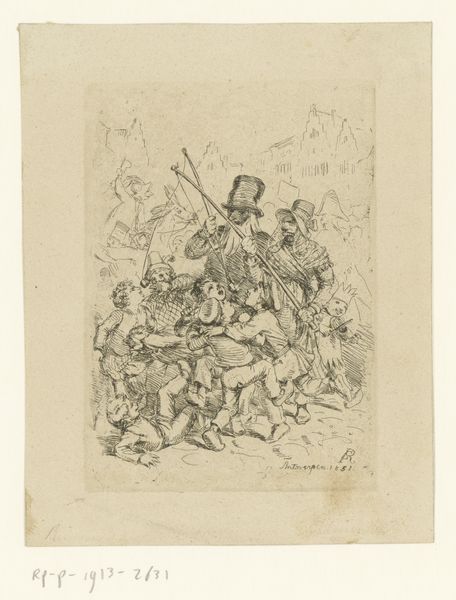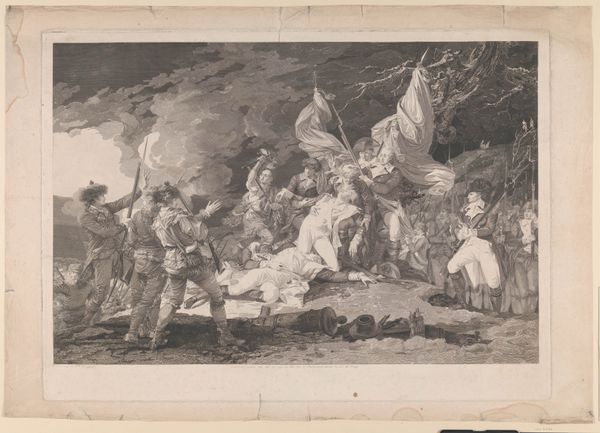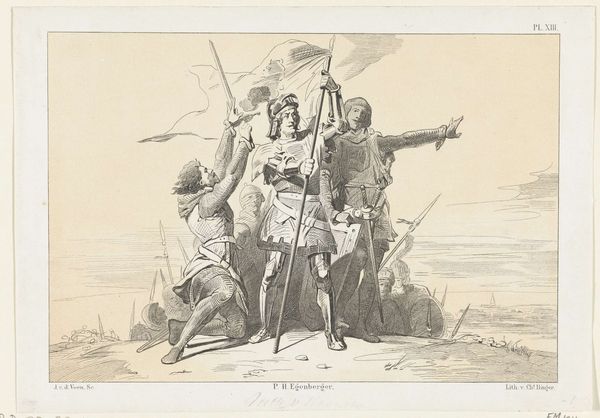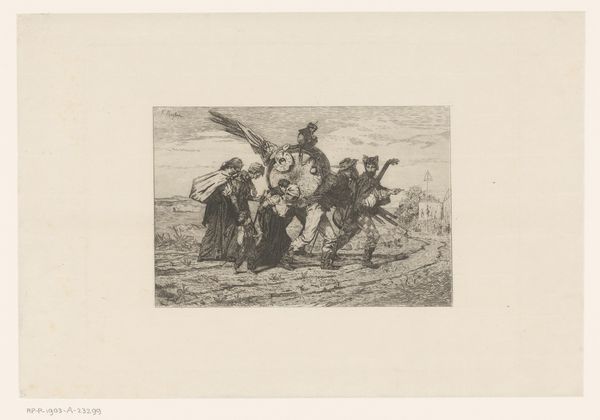
Claudius Civilis bestormt de Romeinse legerplaats Vetera 1855 - 1861
0:00
0:00
Dimensions: height 165 mm, width 240 mm, height 210 mm, width 270 mm
Copyright: Rijks Museum: Open Domain
Curator: Today, we're looking at Christiaan Lodewijk van Kesteren's engraving, "Claudius Civilis bestormt de Romeinse legerplaats Vetera," created between 1855 and 1861. It’s currently held in the Rijksmuseum. Editor: My initial impression is one of explosive chaos! The composition, though detailed, feels very active, almost agitated. There is such tension created through line and contrast! Curator: Absolutely. The work portrays a key historical event: the Batavian revolt against Roman rule. Kesteren’s piece depicts Claudius Civilis leading his forces to storm the Roman military camp at Vetera. What Kesteren seems to emphasize through his focus on Civilis is that this historical narrative is tied up in questions of indigenous resistance against colonial power, it is ripe with themes of identity and anti-oppression. Editor: And it’s rendered with such dynamism! The artist's choice of stark contrasts contributes so much to this sense of dramatic movement and high energy. I notice the clustered figures, but their details recede to highlight the leading figures like Civilis, of course, drawing us into his central role and highlighting the strength in his form. The choice to use engraving—a medium often associated with precision—creates this controlled frenzy. Curator: Indeed. Engravings allowed for mass production. Thus, these depictions of heroic resistance found a broad audience and reinforced a burgeoning sense of Dutch national identity by reflecting themes of rebellion. This historical subject matter speaks directly to the politics of its time. Editor: But don’t you think there’s something beyond its nationalistic connotations? This use of line is incredibly effective to convey this battle, with depth receding from the dramatic center. What Kesteren evokes through contrasts and dramatic staging is truly impressive— regardless of any nationalistic drive, it is a magnificent battle scene, an epic composition to behold. Curator: That is a fair point. Whether it be political and cultural resistance against imperial forces, or the visual structure that allows a moment in history to resonate throughout the years, it's something to witness in person at the Rijksmuseum. Editor: I completely agree, it would be worth your while to contemplate this image in person. To analyze Kesteren’s technique and composition further would truly make for a stimulating experience.
Comments
No comments
Be the first to comment and join the conversation on the ultimate creative platform.
